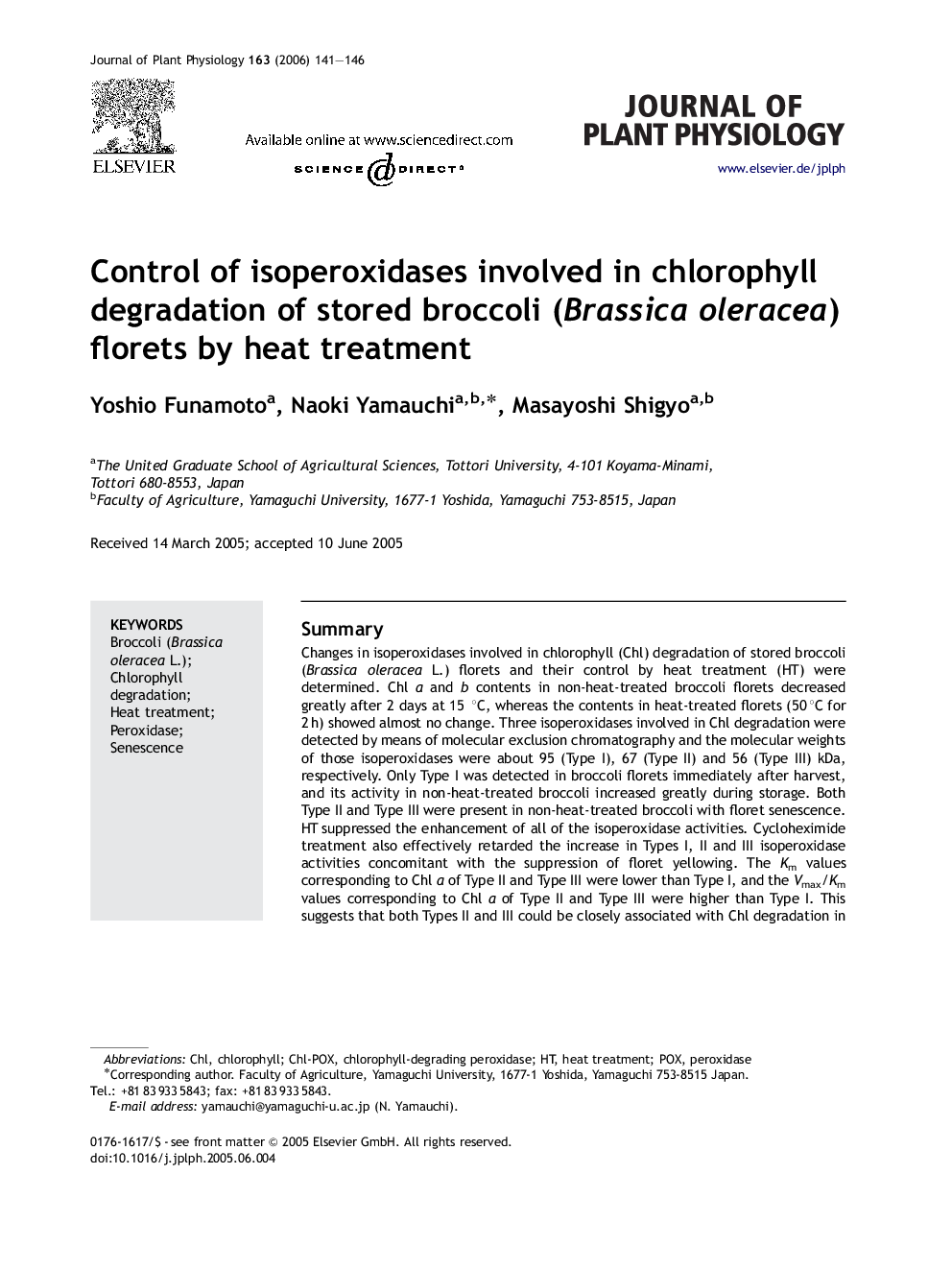| Article ID | Journal | Published Year | Pages | File Type |
|---|---|---|---|---|
| 2057594 | Journal of Plant Physiology | 2006 | 6 Pages |
SummaryChanges in isoperoxidases involved in chlorophyll (Chl) degradation of stored broccoli (Brassica oleracea L.) florets and their control by heat treatment (HT) were determined. Chl a and b contents in non-heat-treated broccoli florets decreased greatly after 2 days at 15 °C, whereas the contents in heat-treated florets (50 °C for 2 h) showed almost no change. Three isoperoxidases involved in Chl degradation were detected by means of molecular exclusion chromatography and the molecular weights of those isoperoxidases were about 95 (Type I), 67 (Type II) and 56 (Type III) kDa, respectively. Only Type I was detected in broccoli florets immediately after harvest, and its activity in non-heat-treated broccoli increased greatly during storage. Both Type II and Type III were present in non-heat-treated broccoli with floret senescence. HT suppressed the enhancement of all of the isoperoxidase activities. Cycloheximide treatment also effectively retarded the increase in Types I, II and III isoperoxidase activities concomitant with the suppression of floret yellowing. The Km values corresponding to Chl a of Type II and Type III were lower than Type I, and the Vmax/Km values corresponding to Chl a of Type II and Type III were higher than Type I. This suggests that both Types II and III could be closely associated with Chl degradation in broccoli florets and that HT might inhibit floret senescence by suppression of isoperoxidase activities.
